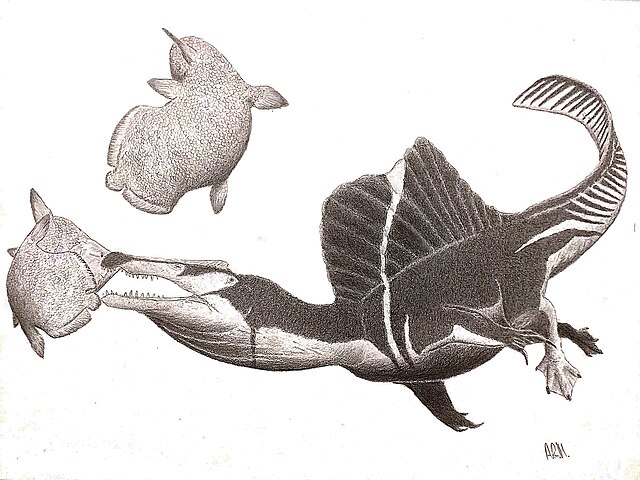
Jurassic World: Rebirth is one of 2025’s biggest blockbusters, grossing over $860,000,000 globally (theNumbers.com). My personal favorite dinosaur, Spinosaurus, makes its return to the silver-screen for thr first time since 2001’s Jurassic Park III. Hardcore fans and casual enjoyers alike will be quick to notice the anatomical differences made to the animal between the two movies. Here, Spinosaurus is portrayed as swimming in the open ocean in pursuit of the team’s boat. The canonical explanation for the dinosaur being a powerful swimmer is that scientists working for the bioengineering company InGen wanted to create bigger and badder dinosaurs (compared to their original creation), but the real reason is to accurately reflect the current research being done to discover if Spinosaurus was an aquatic predator or not. Just how much did the movie get right about Spinosaurus, and what controversies have arisen from this research?
The research paper I chose to supplement my argument was published in 2021 by David Hone and Thomas Holtz Jr., two of my favorite paleontologists. In this paper, they are refuting the research presented by Ibrahim et al., 2020a. Ibrahim and his team made new discoveries about Spinosaurus aegyptiacus such as a re-examination of the hips and legs (stouter legs and more upright posture) and an elongated, oar-like tail (used to propel the animal through the water) which suggests a lifestyle as an aquatic pursuit predator. Ibrahim and his team think that S. aegyptiacus would be able to swim and dive for prey much like a shark, terrorizing ancient rivers, estuaries, and potentially the ocean (as shown in the Rebirth film). Here is where Hone & Holtz, 2021 raise some concerns. One of the most obvious features of S. aegyptiacus is the 6 foot tall sail along its back, which Hone & Holtz theorize would make the animal an unbalanced swimmer. Instead, they suggest a lifestyle similar to a modern shorebird or heron, wading through the water and using its S-shaped neck and long arms to snag fish out of the water. The team uses several observations to back this claim up, such as:
- The position of the nostrils on the skull allowing the animal to breathe while sticking its head in the water, rather than being clogged when fully submerged
- Short legs wouldn’t generate as much thrust in open water, despite the oar-like tail
- Weaker tail muscles couldn’t power the tail, leading to an inefficient swimmer

Figure 1. from the Hone & Holtz paper, highlighting the areas on the body during wading and swimming that dispute the model proposed by Ibrahim et al., 2020 a. White arrows directly support the model, gray arrows need further research done on them, and black arrows actively contradict the model.
Despite the ever-changing science, Jurassic World: Rebirth got some aspects about S. aegyptiacus correct. The movie production team made changes to the animal’s appearance between movies, highlighting the rectangualr sail, short legs, and oar-like tail. The movie portrays the dinosaur as a powerful swimmer, which may be controversial among paleontologists who think otherwise. My personal take on the science is that S. aegyptiacus either waded or swam depending on the prey present in the area. It may not have been the best swimmer physics-wise, but we know that the dinosaur ate prey from both freshwater and saltwater environments, leading me to think that S. aegyptiacus was one of, if not the top apex predator of ancient northern Africa.
Citations:
https://www.the-numbers.com/movie/Jurassic-World-Rebirth-(2025)#tab=summary
https://commons.wikimedia.org/wiki/File:Spinosaurus_aegyptiacus_by_a.r.m.jpg
https://api.drum.lib.umd.edu/server/api/core/bitstreams/4645143b-ca2f-4621-8261-ebd057746560/content